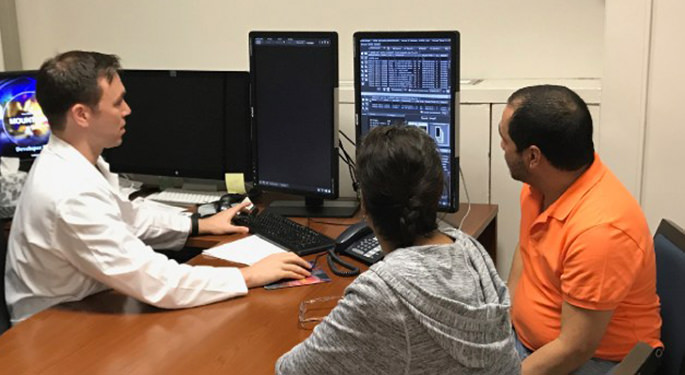
Cavernomas
At Mount Sinai, we have experts who specialize in cavernomas (also called cavernous angiomas or cavernous malformations). Cavernomas are abnormal clusters of vessels with small bubbles (or caverns) filled with blood that make them look like a berry. These can range in size from microscopic up to several inches in diameter.
Unlike arteriovenous malformations, there is little blood flow in cavernomas. Since the walls of cavernomas are weak, blood can leak out. Cavernomas can occur in the brain and on the spinal cord. While a cavernous angioma may not affect function, it can cause seizures, stroke symptoms, hemorrhages, and headaches.
Approximately one in 200 people have a cavernoma. Many are present at birth, and some develop later in life, usually along with other endovascular abnormalities such as a venous malformation. Most do not have a family history of cavernomas. If you have more than one, though, we may suspect a genetic component. If you have the inherited form of cavernomas, each of your children has a 50 percent chance of inheriting the condition. We are researching narrowing down the precise mutation that causes the condition. We can also do genetic counseling to evaluate your risk of cavernomas.
Symptoms
We usually only diagnose a cavernoma after you have had a seizure, a loss of function, or a surprise finding when we perform a magnetic resonance imaging scan for another reason. Cavernomas may have no symptoms but about one in three people with cavernous angiomas eventually develop symptoms, often between ages 20 and 40.
The type, frequency and severity of symptoms often depend on the location of the cavernoma. Typical symptoms include:
- Headache
- Epileptic seizure
- Neurological loss, such as
- Limb weakness
- Vision or balance problems
- Problems with memory and attention
- Brain Hemorrhage, which can be small, but sometimes massive, leading to stroke-like symptoms
- Spinal cord injury
Treatment Options
Our doctors develop treatment plans for people with cavernomas based on several factors:
- Bleeding: We consider the frequency and amount of bleeding. Some cavernous angiomas bleed slowly enough that the body can re-absorb the blood. Others bleed more profusely and can put dangerous pressure on the surrounding brain tissue and/or cause an obvious hemorrhage. If your cavernous angioma has bled once, it is likely to bleed again, generally within two years of the first bleed.
- Number of cavernomas: The more cavernomas you have, the greater the chance of hemorrhage.
- Location: Some locations are more dangerous than others. If you have a cavernoma on your brain stem (where the brain connects to the spinal cord), in the cerebral cortex (the outer layer of the brain responsible for speech, motor, and visual abilities), or along the spinal cord, surgery is riskier than if the cavernoma is elsewhere. On the other hand, cavernomas in these areas can cause more damage when they do bleed than cavernomas located elsewhere. We weigh the risk versus benefit carefully when deciding on treatment plan.
- Presence of other endovascular abnormalities: Up to 40 percent of cavernomas occur near venous malformations, which can make surgical treatment more difficult.
Depending on thorough assessment of the above factors, treatment plans include:
- Watching and waiting: We observe for changes, recent hemorrhage, or worsening symptoms.
- Medications: We cannot directly treat the cavernomas with medicine, but we can help with symptoms such as seizures and headaches.
- Surgery: This is the only cure for cavernomas. We typically perform surgery on cavernous angiomas with a recent hemorrhage and those that are growing or causing seizures.
We surgically remove cavernomas by making a small opening in the skull to expose the brain (a craniotomy), usually under general anesthesia. We use the latest, safest, and most effective techniques available for removing cavernomas with as little disruption to the brain as possible, including microsurgery and computer image-guided surgical navigation.
Most patients leave the hospital within two days after the procedure. If you have experienced neurological loss because of the cavernomas, we may recommend post-surgical rehabilitation.